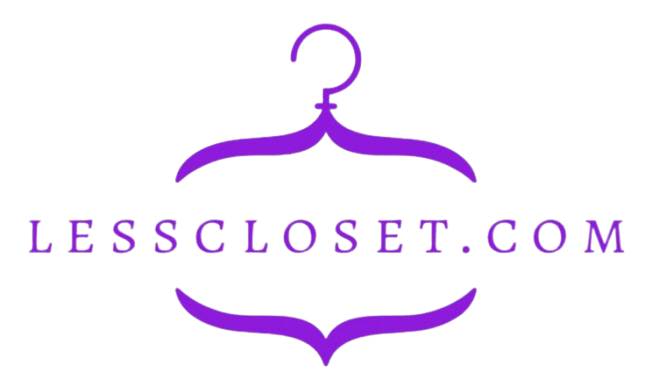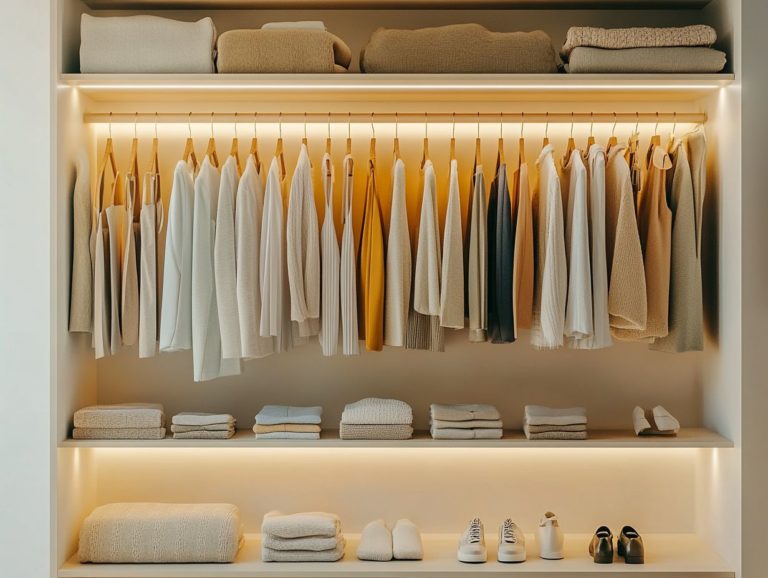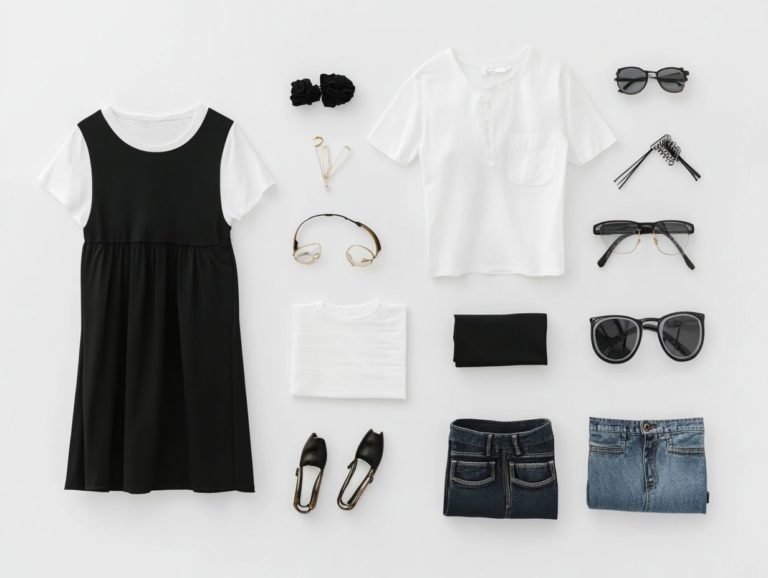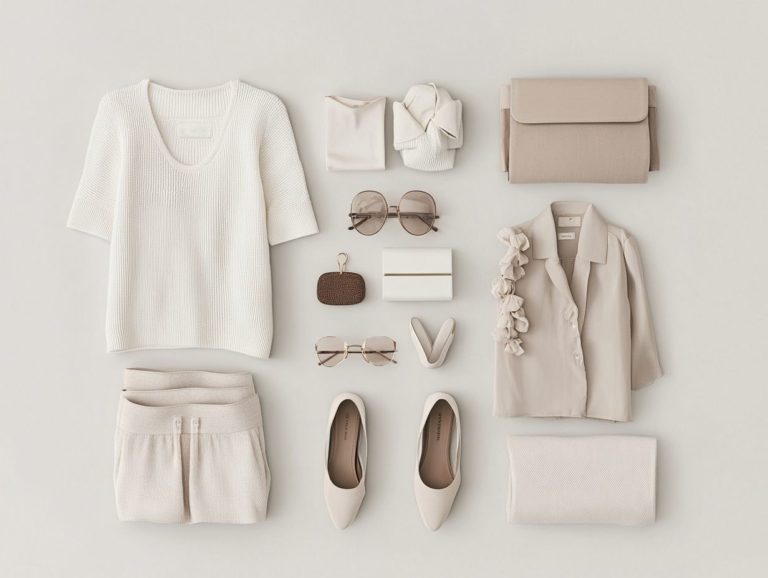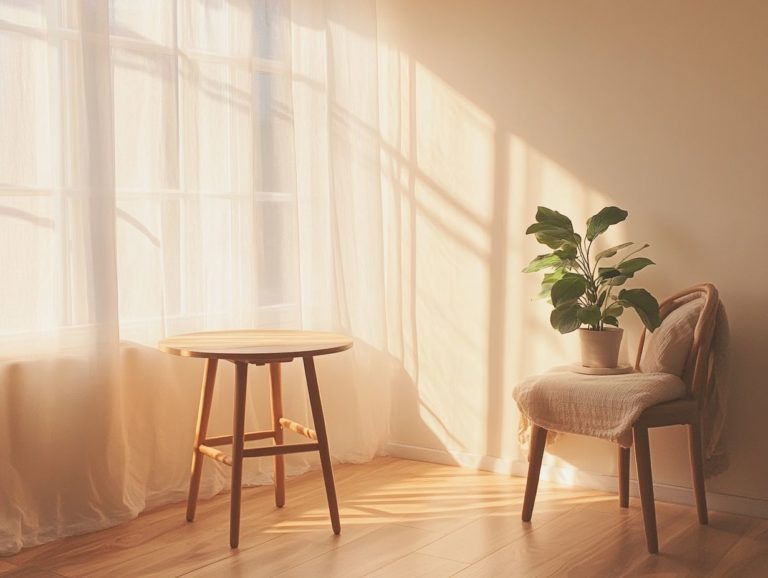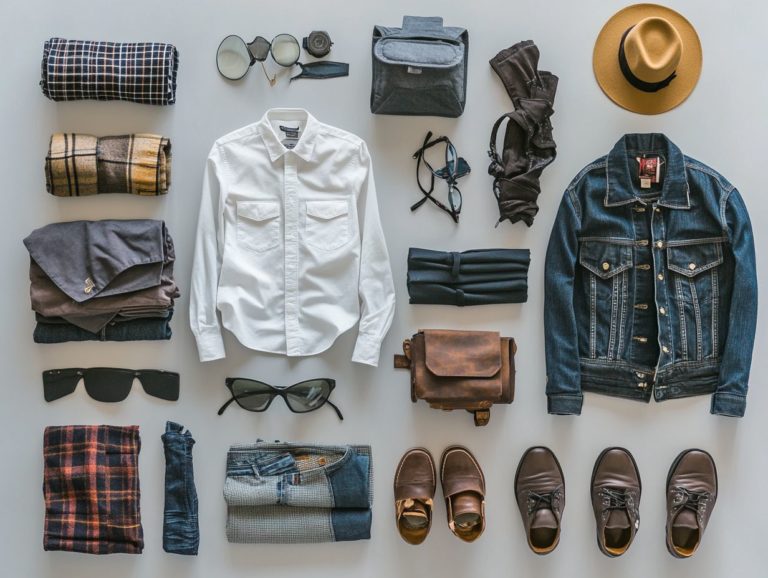What are the Best Fabrics for Minimalism?
Minimalist fashion transcends mere trend; it embodies a lifestyle choice that prioritizes simplicity and sustainability.
This exploration delves into the essence of minimalist fashion, highlighting the advantages of selecting the right fabrics and how they enhance a versatile wardrobe. From timeless materials like cotton and wool to luxurious silk and breathable linen, each fabric brings its own unique benefits to the table.
You’ll also discover essential care tips and ingenious ways to seamlessly weave these fabrics into your everyday style. Get ready to transform your wardrobe with simplicity and elegance!
Contents
- Key Takeaways:
- Understanding Minimalist Fashion
- Benefits of Choosing the Right Fabrics
- Top Fabrics for Minimalist Wardrobe
- How to Care for Minimalist Fabrics
- Incorporating Minimalist Fabrics into Your Wardrobe
- Frequently Asked Questions
- What are the Best Fabrics for Minimalism?
- What are the top fabric choices for a minimalist wardrobe?
- Why is cotton considered the best fabric for minimalism?
- What makes linen suitable for a minimalist lifestyle?
- How can silk be incorporated into a minimalist wardrobe?
- Why is wool a popular choice for minimalists?
Key Takeaways:
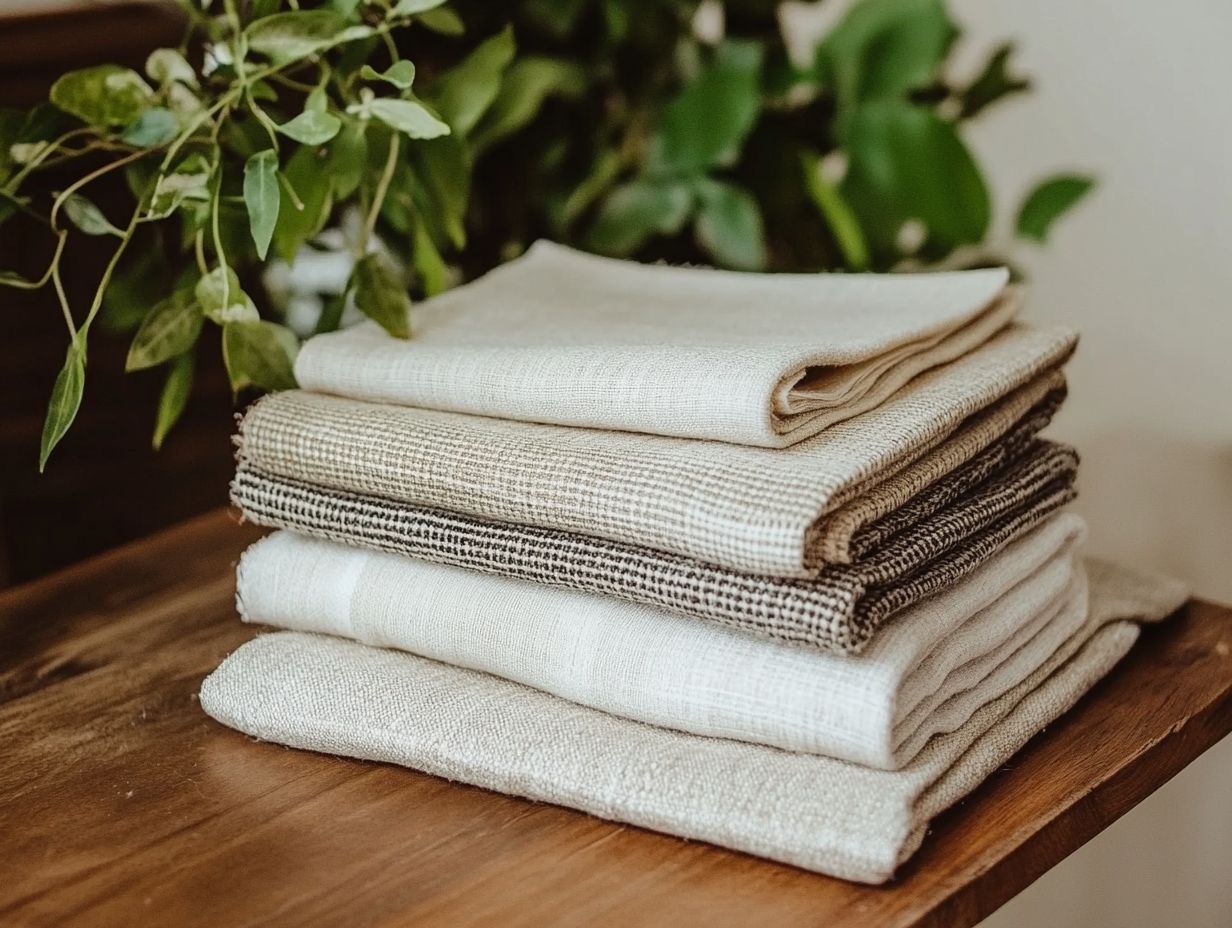
- Choosing the right fabrics can make all the difference in your wardrobe, ensuring durability and versatility for your garments.
- Cotton, wool, silk, and linen are top fabrics for a minimalist wardrobe due to their natural, timeless, and high-quality qualities.
- Proper care and maintenance techniques are essential for preserving minimalist fabrics, ensuring their longevity and sustainability in your wardrobe.
Understanding Minimalist Fashion
Embracing minimalist fashion is a lifestyle choice that highlights simplicity and sustainability, inviting you to curate a wardrobe filled with versatile, high-quality pieces crafted from eco-friendly fabrics. This approach not only helps you reduce clutter but also fosters sustainable shopping habits, nurturing a more conscious consumer culture.
Influential advocates like Kathryn Kellogg, along with brands such as Patagonia and Outerknown, are at the forefront of this movement, seamlessly blending style with a commitment to environmental responsibility.
What is Minimalist Fashion?
Minimalist fashion embodies a design philosophy centered on simplicity, functionality, and sustainability in your clothing choices, often featuring eco-friendly fabrics.
This approach invites you to streamline your wardrobe by opting for versatile pieces that mix and match effortlessly, ultimately curbing the tendency for excessive consumption. At the heart of minimalist fashion are essential principles: prioritizing quality over quantity, selecting timeless styles that transcend fleeting trends, and embracing a neutral color palette to enhance wearability. For more insights, check out the best minimalist fashion resources.
Sustainable textiles like organic cotton, Tencel (a sustainable fabric made from wood pulp), and hemp not only reflect these principles but also contribute to a reduced carbon footprint. By thoughtfully integrating such eco-friendly materials, you cultivate a wardrobe that is not only chic and functional but also aligned with a respect for the environment.
Benefits of Choosing the Right Fabrics
Selecting the right fabrics is paramount in sustainable fashion. Your choices not only influence the longevity and versatility of your wardrobe but also have significant implications for the environment and ethical practices within the garment industry.
It s essential to prioritize eco-friendly fabrics, ensuring that your style reflects a commitment to sustainability.
Durability and Versatility
Durability and versatility are essential qualities of sustainable textiles, ensuring that your clothing not only lasts longer but also serves multiple purposes. Emphasizing strong materials is vital for anyone aiming to build a minimalist wardrobe.
By incorporating garments made from eco-friendly fabrics like organic cotton, Tencel, and recycled polyester, you can reduce waste while benefiting from pieces that endure daily wear and tear. These materials cut down on the need for frequent replacements and come in a diverse array of styles and functions, making them perfect for those who value both efficiency and aesthetic appeal.
By prioritizing these sustainable fashion principles, you can create a more conscious and streamlined closet.
Top Fabrics for Minimalist Wardrobe
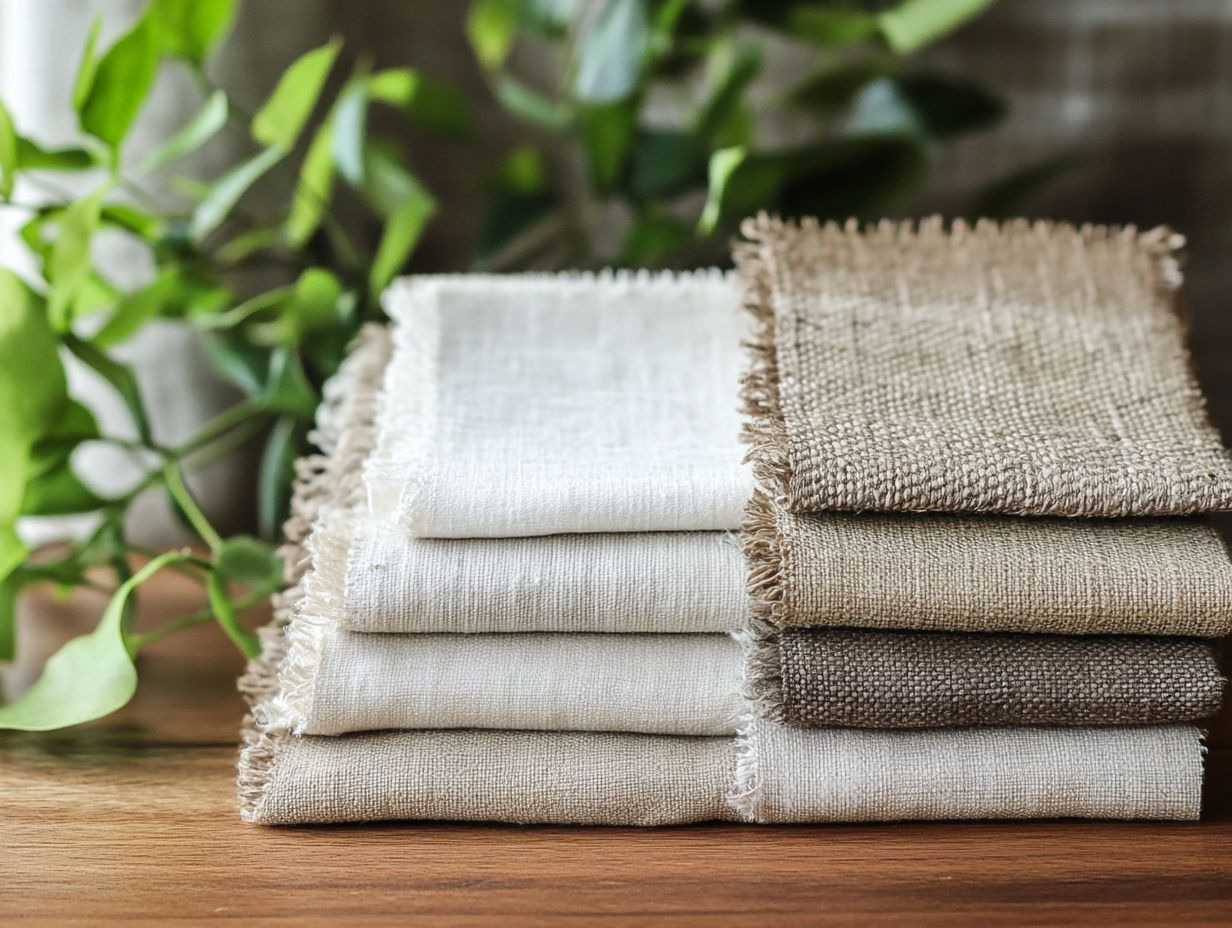
Building your minimalist wardrobe involves a thoughtful selection of premium fabrics that embrace sustainable fashion principles. Consider incorporating eco-friendly options such as organic cotton, bamboo rayon, and TENCEL Lyocell (a sustainable fabric made from wood pulp), all of which stand out as exceptional choices.
Explore these fabrics today and start building your dream minimalist wardrobe!
Cotton
Organic cotton stands as a cornerstone of sustainable fashion, known for its breaks down naturally and significantly lower environmental impact compared to conventional cotton.
This eco-friendly fabric not only nurtures healthier soil and conserves water, but it also provides an exceptional softness that makes it the go-to choice for anyone who values comfort in their wardrobe.
As you embrace minimalist fashion, the adaptability of organic cotton becomes evident, effortlessly complementing various styles while maintaining a commitment to sustainability.
It plays a vital role in the wider realm of sustainable textiles, giving you the power to make conscientious choices without compromising on quality or aesthetic appeal.
This allows you to cultivate a more environmentally responsible lifestyle, all while looking effortlessly stylish.
Wool
Wool, as a natural fiber, truly distinguishes itself in the realm of sustainable fashion due to its durability and biodegradability, making it a superb choice for eco-friendly clothing.
This exceptional fiber provides remarkable warmth, which means it pulls moisture away from your skin, which is crucial for comfort in various climates.
Its moisture-wicking properties not only keep you dry but also help prevent the growth of odors, ultimately extending the lifespan of your garments.
As more consumers lean towards biodegradable fabrics, wool s environmental credentials come to the forefront it s renewable and sourced from sheep that graze on grasslands, fostering biodiversity.
With sustainable fashion gaining traction, opting for wool not only helps reduce your carbon footprint but also supports responsible textile practices, benefiting both the planet and your wardrobe.
Silk
Silk, often regarded as a symbol of luxury, can also be an eco-friendly choice when sourced ethically, perfectly aligning with your sustainable fashion aspirations.
This exquisite textile comes from the silkworm, which thrives on mulberry leaves plants that flourish without the need for harmful pesticides.
When harvested responsibly, silk production can significantly reduce environmental impact while nurturing biodiversity.
By embracing natural farming practices, the silk industry showcases its potential to contribute to the broader movement toward eco-friendly fabrics.
The use of organic dyes enhances silk’s appeal as a sustainable textile, making it an ideal choice for consumers like you who prioritize both quality and sustainability in their wardrobes.
Linen
Linen, sourced from the flax plant, is a standout in the realm of sustainable fashion, known for its incredibly low environmental impact and biodegradability.
This makes it a go-to eco-friendly fabric for discerning individuals like you.
What s truly impressive about this textile is that it requires fewer resources during cultivation think less water and fewer pesticides while offering a durable and breathable option for minimalists looking to refine their wardrobes.
The process of creating linen involves harvesting the flax, soaking it, and then processing the fibers into a versatile material that can be transformed into clothing, home goods, and beyond.
When compared to other sustainable textiles like hemp, linen distinguishes itself with its unique texture and elegant drape.
This makes it an exceptional choice for anyone who appreciates both style and sustainability in their fashion selections.
How to Care for Minimalist Fabrics
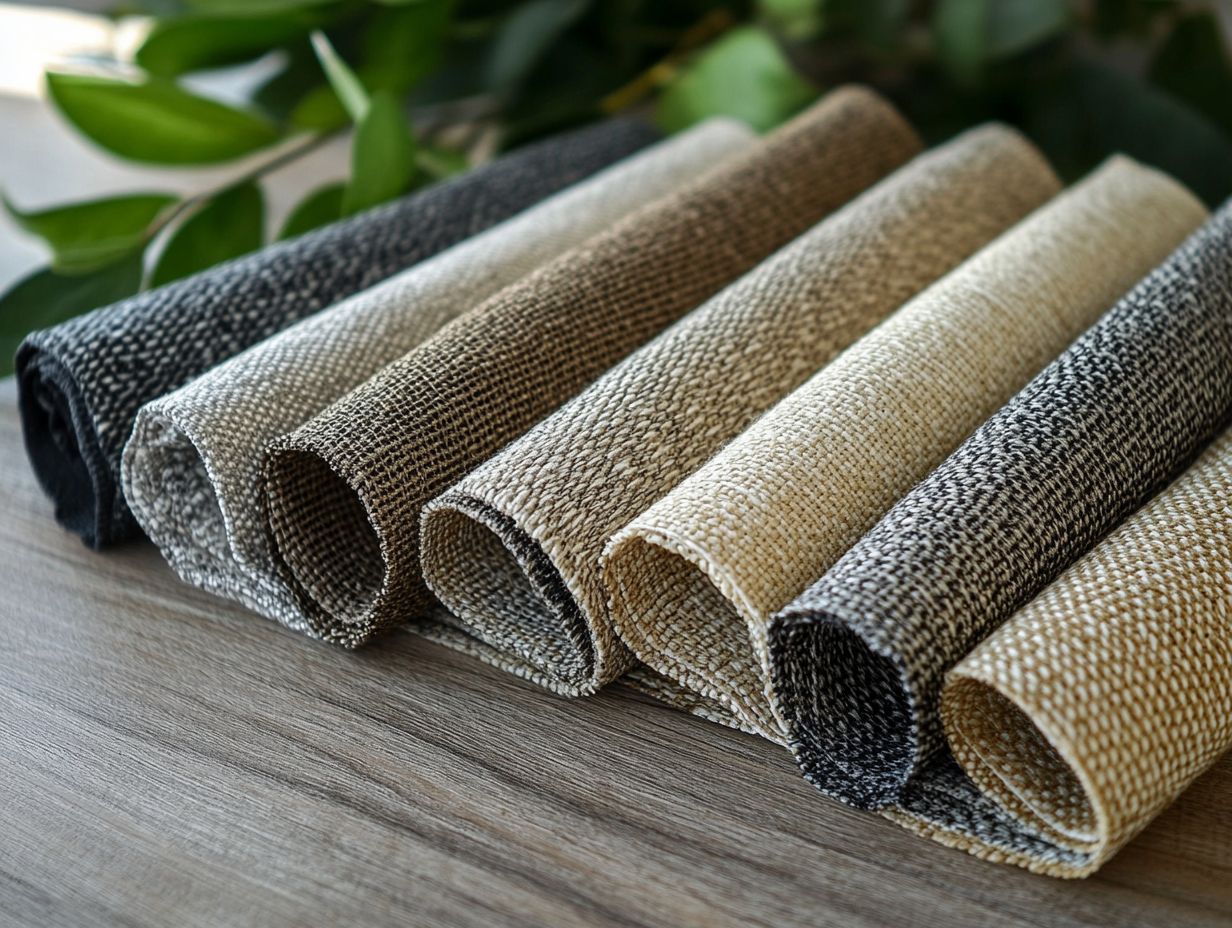
Caring for minimalist fabrics properly is crucial for preserving their quality and extending their lifespan.
This allows you to enjoy sustainable textiles for many years ahead.
Explore more sustainable fabric choices to enhance your wardrobe!
Proper Washing and Maintenance Techniques
Implementing effective washing and maintenance techniques for eco-friendly fabrics can greatly enhance their lifespan and preserve their appearance.
By adhering to specific care instructions tailored to sustainable materials, you not only optimize the longevity of your garments but also contribute to the broader mission of reducing environmental impact. For instance, wash organic cotton in cold water with gentle detergent to maintain its fibers. Hemp can handle a more robust cleaning routine but still benefits from air drying. Wash Tencel or Lyocell garments using low-impact methods and turn them inside out to minimize wear.
Following these guidelines helps you see how your choices can make a real difference in promoting a culture that values sustainable fashion and champions eco-friendly fabric choices.
Incorporating Minimalist Fabrics into Your Wardrobe
Incorporating minimalist fabrics into your wardrobe invites you to engage in smartly pairing pieces, allowing you to craft stylish, sustainable outfits that truly embody your eco-friendly values.
Each piece becomes a statement, reflecting not just your aesthetic but also your commitment to a more sustainable world.
Tips for Mixing and Matching Fabrics
Mixing and matching fabrics can elevate your minimalist wardrobe, allowing for a range of stylish combinations while keeping your eco-friendly credentials intact.
By thoughtfully selecting textures and materials, you can create outfits that are visually stunning and sustainable. For example, pairing organic cotton with linen or incorporating reclaimed materials can add depth and intrigue to your look, reflecting the characteristics of minimalist fashion.
It’s vital to choose versatile pieces that mix and match seamlessly, ensuring your wardrobe remains functional yet effortlessly chic. By prioritizing brands that emphasize ethical production and responsible sourcing, you can contribute significantly to a more sustainable fashion ecosystem, benefiting the planet while enhancing your personal style.
Frequently Asked Questions
What are the Best Fabrics for Minimalism?

Minimalism is all about simplicity and functionality. Therefore, the best fabrics for minimalism should be durable, versatile, and have a timeless appeal.
What are the top fabric choices for a minimalist wardrobe?
The top fabric choices for a minimalist wardrobe include cotton, linen, silk, wool, and denim. These fabrics are breathable, comfortable, and can be easily styled in different ways.
Why is cotton considered the best fabric for minimalism?
Cotton is considered the best fabric for minimalism because it is a natural and sustainable material that is soft, comfortable, and easy to care for. It is also versatile and can be used in various clothing items.
What makes linen suitable for a minimalist lifestyle?
Linen is a lightweight and breathable fabric that is perfect for a minimalist lifestyle. It has a relaxed and effortless look, making it a great choice for achieving a minimalist aesthetic.
How can silk be incorporated into a minimalist wardrobe?
Silk is a luxurious, elegant, and timeless fabric that can add sophistication to a minimalist wardrobe. It can be used in blouses, dresses, and even as an accent piece.
Why is wool a popular choice for minimalists?
Wool is a durable and sustainable fabric that is ideal for minimalists who value quality and longevity. It is also great for layering, making it a versatile choice for different seasons.
Explore your own wardrobe today and discover how you can make sustainable fashion choices!
